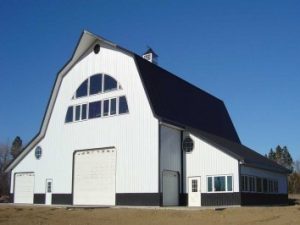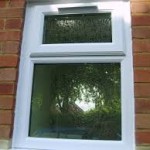The State of California has enacted legislation, which goes into effect January 1, 2014, in relation to window U-factors in new construction. Not in California? Beware, what starts in California, often migrates quickly to other locales.
Please note: The term U-value is often incorrectly used ins
tead of U-factor.
Now what the hey is a U-factor?

If it is cold outside and warm inside, the U-factor is the measurement of how quickly the heat from the inside leaks to the outside. The term U-factor or thermal transmittance is used as a standardized measure of how easily a component passes through heat. In technical talk, U-factor is the overall heat transfer coefficient which describes how well a building element conducts heat. It measures the rate of heat transfer through a building element over a given area under standardized conditions. The usual standard is at a temperature of 24 degrees C.; at 50% humidity with no wind (a smaller U-factor is better at reducing heat transfer).
U is the inverse of R in units of BTU/(h°F ft²)
U = 1/R = QA/ΔT = k/L, where k is the material’s thermal conductivity and L is its thickness.
Clear as a window yet?
The total window U-factor is calculated by area, weighing the contribution of the frame, edge of glass and center of glass. The edge of glass is measured starting from the sightline and going towards the center of glass 2.5”.
Heat is transferred by conduction, convection and radiation. Conduction is like the heat transferring to the handle of a stovetop metal cooking pan. Convection is like the cold air falling and hot air rising causing a convection current in a room. And radiation is like the heat felt from the sun.
How to lower U-factor
The best way to lower U-factor is to reduce conduction, convection and radiation wherever possible.
Starting with the center of glass, low e coatings are used to reduce radiation. Argon gas is injected into the airspace between the glass panes to reduce conduction.
Krypton? Where is Superman?
Krypton gas (although expensive) is sometimes used instead of argon for even lower conduction. For best results balancing conduction and convection, gas filled gaps should be optimized. For argon, the best results are achieved with space a 0.50”. For Krypton, best results are achieved at 0.30”
Suspended films and triple glazing result in substantial reductions in U-value.
The edge of glass U-factor is affected by the aforementioned center of glass selection, the frame selection and the spacer selection. To reduce conduction from the glass to the spacer, either a dual seal or an insulated spacer is recommended. Insulated spacers are the intuitive choice for U-value reduction. However, improvements in some metal spacers have made the differences almost negligible. This is primarily because although the metal spacer is very conductive, it is also very thin and transfers very little heat in a relative sense.
California’s new standard will mandate a maximum U-factor of .32, which is a very small number in relationship to typically purchased windows, which are usually much higher at around .48.
The quickest way to lower U-factor is to upgrade from dual to triple glazed windows. This does come with a cost. Without comparing “apples to apples” in size and design of your building, the number of windows, balanced with heating and cooling costs, you will not be able to factor in cost versus benefit.
Heating and cooling is unlikely to get less expensive in future years, and government intervention is likely to force conservation, even if the cost of the conservation is greater than the savings.









